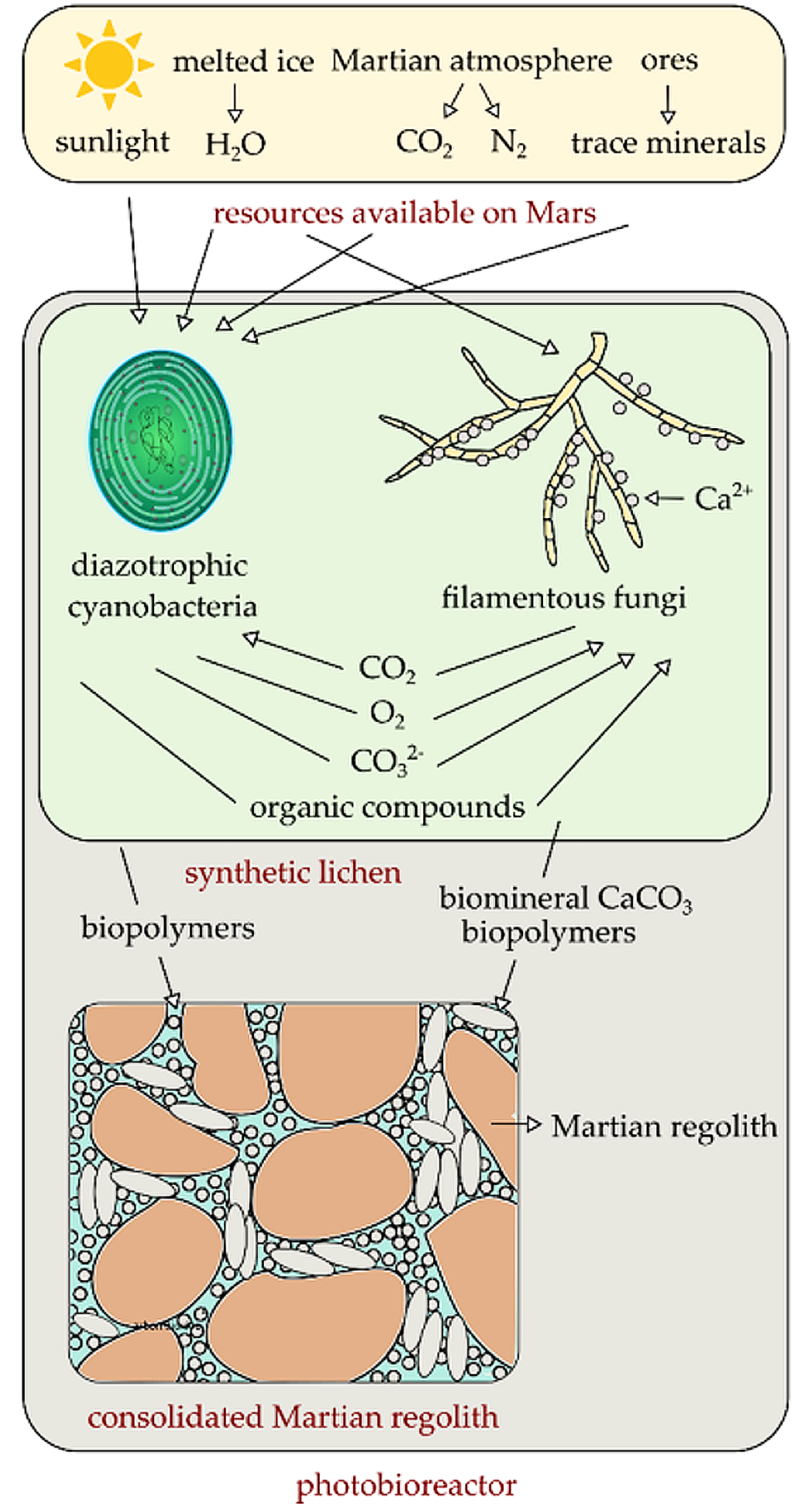Congrui Jin
University of Nebraska, Lincoln

The proposed technology fits within the “commuter” surface mission scenario described in Mars Design Reference Architecture 5.0. To build the centrally located, monolithic habitat, NASA has a history of experimenting with lightweight inflatable habitats to reduce mass and volume. However, the physical structures used to outfit the inflatable must generally be launched by a second spacecraft. This research proposes that, rather than shipping prefabricated outfitting elements to Mars, habitat outfitting can be realized by insitu construction using cyanobacteria and fungi as building agents. Synthetic biology toolkits will be employed to create a synthetic lichen system, composed of diazotrophic cyanobacteria and filamentous fungi, to produce abundant biominerals (calcium carbonate) and biopolymers, which will glue Martian regolith into consolidated building blocks. These self-growing building blocks can later be assembled into various structures, such as floors, walls, partitions, and furniture. In this self-sustaining system of synthetic lichen, each participant supports different functionalities. Cyanobacteria are mainly responsible for 1) capturing carbon dioxide and converting it to carbonate ions and 2) providing oxygen and organic compounds to support filamentous fungi. Filamentous fungi are mainly responsible for 1) binding calcium ions onto fungal cell walls and serving as nucleation sites for calcium carbonate deposition and 2) assisting the survival and growth of cyanobacteria by providing them additional carbon dioxide and reducing their oxidative stress. In addition, both participants secrete extracellular polymeric substances that enhance the adhesion between regolith particles and calcium carbonate precipitates and the cohesion among precipitated particles. The first innovation of this project is to use filamentous fungi, instead of bacteria, as biomineral producers. Although a variety of microorganisms have been shown to be able to promote calcium carbonate precipitation, studies on biomineralization-enabled self-growing materials have been so far limited to bacteria. In the past few years, the PI has conducted extensive research on biomineralization, and her results have demonstrated that filamentous fungi possess distinctive advantages over bacteria to be used as building agents due to their extraordinary capability to promote large amounts of mineral precipitation within short periods of time. The second innovation of this project is to explore a fully autonomous self-growing technology by creating a synthetic lichen system and making use of the mutualistic interactions between photoautotrophic diazotrophic cyanobacteria and heterotrophic filamentous fungi. None of the current self-growing practices is fully autonomous, since the building agents used in the existing studies, very often restricted to a single species or strain, are all heterotrophs and thus their survivability depends on a constant external supply of organic carbon. The proposed co-culture system will utilize the capabilities of two species simultaneously, leading to less reliance on exogenous nutrient sources and self-sustained production of a larger array of biominerals and biopolymers. This technology is not only of significant importance to the future colonizers of new planets but also plays a critical role in tackling the challenges on our own planet by revolutionizing military logistics and construction in remote, austere, high-risk, and post-disaster environments. For example, in the rubble after natural or man-made disasters, this self-growing technology can be used to bond local waste materials to build shelters. In addition, the development of construction materials that capture atmospheric carbon dioxide in the production process is highly aligned with our nation’s commitment to decarbonization.





























